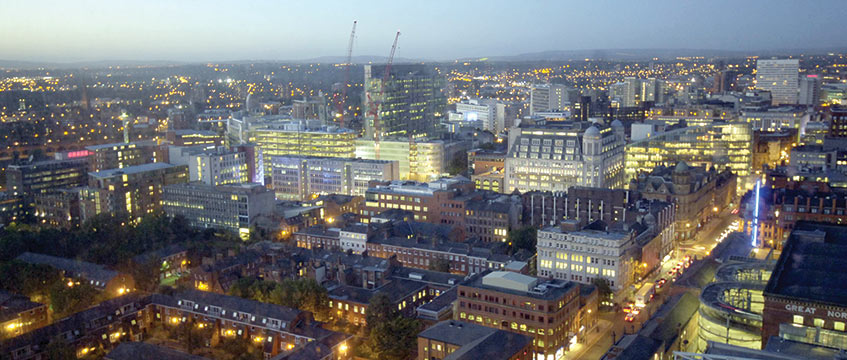Do we need an office-led town centre first policy?
In the war for talent, delivering attractive office space in attractive areas is key and numerous studies have shown that employees want to work in towns and cities. However, new research using figures from EG’s Radius Data Exchange shows that when it comes to delivery, office developers are providing the opposite.
Radius Data Exchange figures reveal that more office space has been proposed outside of town and city centres than in central locations since the start of 2014.
Taking a sample of 2,843 applications across the UK over the five-year period, 1,599 (56%) were outside of EG-defined town centre boundaries, accounting for 52% of the total office floorspace that went in for planning during that time.
In the war for talent, delivering attractive office space in attractive areas is key and numerous studies have shown that employees want to work in towns and cities. However, new research using figures from EG’s Radius Data Exchange shows that when it comes to delivery, office developers are providing the opposite.
Radius Data Exchange figures reveal that more office space has been proposed outside of town and city centres than in central locations since the start of 2014.
Taking a sample of 2,843 applications across the UK over the five-year period, 1,599 (56%) were outside of EG-defined town centre boundaries, accounting for 52% of the total office floorspace that went in for planning during that time.
Figures for 2018 alone indicate even more of a swing towards out-of-town locations, with 57% of last year’s newly proposed space coming outside urban centres.
Of the 138 towns and cities featured in the study, 96 have seen more new office space go in for planning outside of the town centre than in central locations across the five-year period.
However, when extracting only the key 14 regional cities from this analysis, the trend is reversed completely – with 584 of 1,024 applications coming centrally, representing 69% of new proposals by square footage since 2014.
For the rest of the towns and cities, the preference for developers is clearly to build outside of the urban centre – with 73% of new space proposed at sites outside of what EG has determined the centre.
Offices improve the high street
Recent analysis on both employee sentiment towards office locations and how business space occupation factors into local urban economies indicates that if this development pattern continues, some of those towns and cities could fall behind in terms of both attracting new employees and improving the fortunes of ailing high streets.
Savills’ “What Workers Want” survey, released last month, showed that office employees in the UK indicated a clear preference to work in a city or town centre as opposed to a business park or suburban location. Some 58% of those surveyed said they wanted to spend the majority of their working time in more built-up areas.
Only 7% of the respondents indicated that their preference was to work in a business park – the least popular of the four available options; although Savills said that this may be partly attributable to historic perceptions from workers in general.
Centre for Cities’ analysis from February this year showed that urban centres that have a greater capability to attract knowledge-based ‘exporter’ businesses were more likely to see thriving high streets and population growth; as shops, bars and restaurants benefit from proximity to higher-earning customers for the duration of the working day.
City centres with a higher share of jobs in industries such as marketing, finance, and law tended to have lower vacancy rates on high streets according to the analysis, and also saw population growth outstrip national averages off the back of further job creation, while new businesses moving into those locations had a demonstrable wider impact on the health of those centres as a whole.
Civic leadership needed
This raises the question of whether there is a wider conversation to be had about new business space development in a similar guise to that which has been rumbling along in the retail sector about out-of-town development and the resonant impact on urban centres.
This isn’t necessarily to say that business parks or similar types of city-adjacent office projects or campuses cannot continue to play a role in attracting businesses or helping local areas to flourish, as certain occupiers will insist on those types of office provision – and if there are improvements that can be made to those existing environments to enhance employee satisfaction, then they should undoubtedly be welcomed.
However, the statistics provide evidence that councils, mayors, and all other types of civic leadership should be encouraging developers to look more acutely at central locations when assessing requirements for new business space across the country in a bid to stymie any flow of employees beyond town centre boundaries.
EG town centre definitions
Key cities are defined as: Manchester (including Salford), Birmingham, Belfast, Southampton, Bristol, Nottingham, Liverpool, Newcastle-upon-Tyne, Sheffield, Cardiff, Edinburgh, Glasgow, Cambridge and Leeds.
EG defined town centres through postcode and mapping work, rather than any local definitions of the central business districts. All planning data sourced from Radius Data Exchange.











